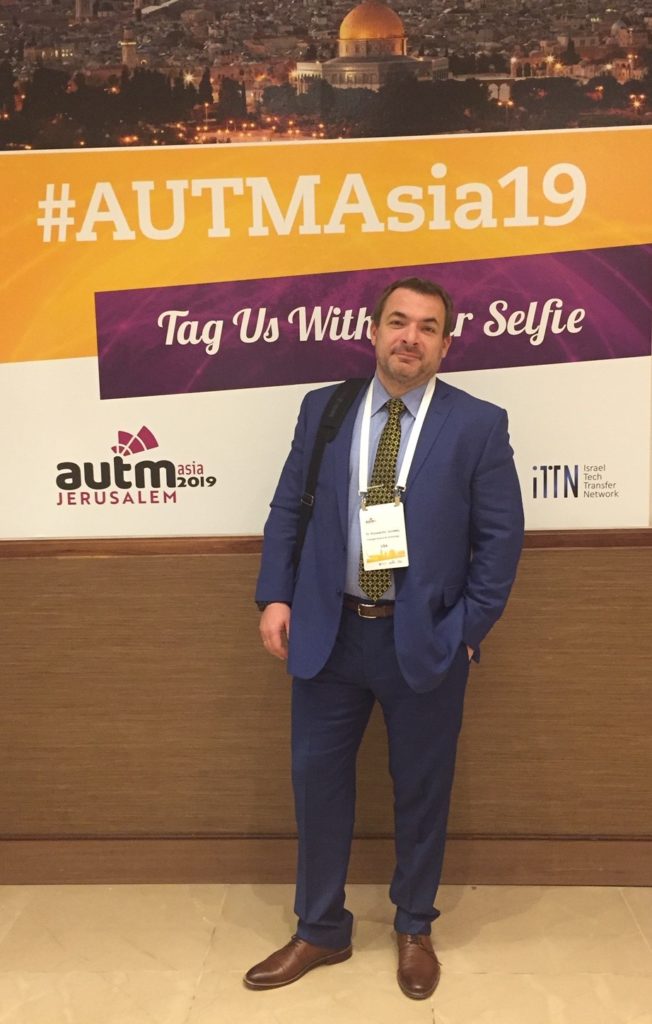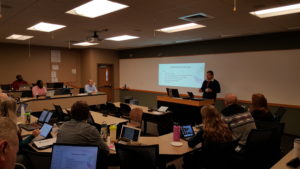Posted March 28, 2024 By: Reda El Alami
On March 21st, Foresight attended an AUTM webinar called “The AI Enabled TTO.” The presenters were Marc Sedan & John Kearney of NYU and Declan Weldon from the University of Glasgow. These presenters provided background information on what AI is, how to implement it in your workplace, the worries/challenges of AI, and specific use cases in their workplace to show how to adapt AI to your everyday. The most common callout from all of the presenters was resistance to change. This problem is their biggest hurdle, and more specifically, people do not want to change processes they have used for countless years. Once the experts demonstrated how AI worked, they introduced it into the workplace in steps. It then started to get more widely used and saved time and money while at the same time giving users the confidence to use this in their everyday work.
Mr. Kearney talked in depth about how NYU was one of the first places to gain access to AI, other than the healthcare field. NYU introduced AI to their workplace, giving 40 people access to explore and play with it. It took around four weeks for people to start making use cases. Six months after being introduced, they have over 200 use cases, with 75% of the office using AI. Once people started using AI and gained confidence, they found countless use cases for AI. He mentioned three stages for users of AI. Stage 1: Understanding basic concepts, Stage 2: Refining & Learning from AI, and Stage 3: Expanding your AI applications. All three steps are integral to getting comfortable with AI and using it to help with everyday/repetitive tasks. He also mentioned that the money invested into the specific AI chosen comes back to your workplace –by reducing the time spent on repetitive tasks and, at the same time, keeping billable hours the same, taking dead data off the books, and making things more efficient and correct. He went on to say that these are all ways that can affect the bottom line.
Mr. Weldon was the last presenter of the day. He supported a lot of what Mr. Kearney stated. Mr. Weldon agreed that The University of Glasgow has been resistant to change. He also agreed with the notion that it has a steep history. Lastly, Mr. Weldon concurred that the challenge had a lot to do with how to adopt AI into the University and getting staff to implement it. Mr. Weldon was passionate and excited about how AI can benefit the college. He was so excited that he even had Mr. Kearney fly there to help introduce it to his employees. Mr. Kearney spent time training basic prompts and dealing with simple aspects of AI to staff and worked on streamlining contracts, disclosures, and dead data. What did they find? They spotted partnerships hidden in corporate data, helped find new projects/opportunities for the university from the old data, helped streamline and drastically reduce hours for invention disclosures while keeping the validity of the form intact, and finally, helped with client contract review (a 1-hour process reduced to 10 minutes).
Overall, this webinar was an excellent opportunity to see detailed examples of AI use in the workplace. The webinar also showed that resistance to change was very common. But after giving AI a chance, the possibilities are endless. Finally, the webinar showed that the money will return to your workplace. AI is a worthy venture to explore because AI will be a big part of our workplace future.


